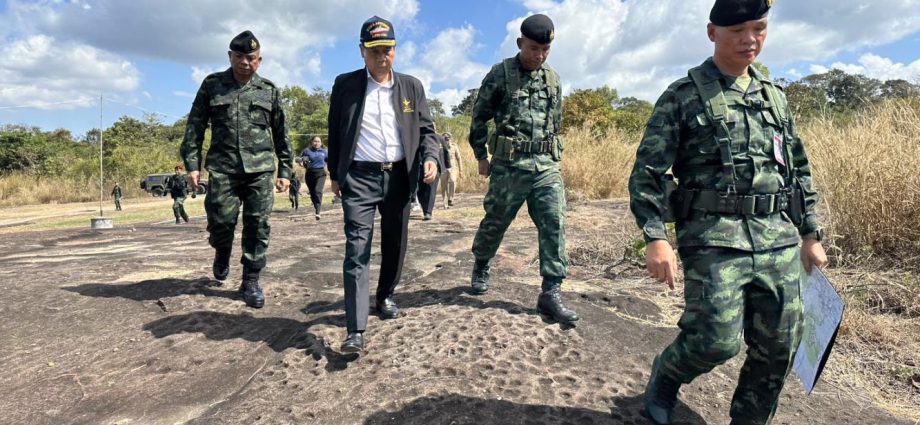Sutin eyes Preah Vihear tourist cash if deal for re-opening can be struck
PUBLISHED : 17 Dec 2023 at 06:55

Si Sa Ket: Seven Pheu Thai MPs from this northeastern province have submitted a petition to Prime Minister Srettha Thavisin asking him to seek talks with the Cambodian government on travel to Preah Vihear Temple on the Thailand border.
Defence Minister Sutin Klungsang on Saturday said the MPs’ petition came during his trip to Pha Mor E Daeng in Kantharalak district of this northeastern province, where the fence around the disputed temple has been locked on the Thai side since 2008.
Preah Vihear (Phra Vihan) Temple is currently closed to all visitors as a result of border conflicts and the Covid-19 pandemic although Cambodia has allowed day-trip access on a visa-free basis to Thais in the past.
On Thailand’s side, Mr Sutin said more tourism would help stimulate activity at the border, in line with the government’s policies, and expressed hope the good relationship that former prime minister Thaksin Shinawatra had with the former Cambodian premier, Hun Sen, might help pave the way for possible negotiations on the matter.
Maj Gen Nut Sri-In, commander of the Suranaree Task Force, said the border opening would not affect national security, and a decision from the Cambodian government on the matter is needed.
On Nov 24, the Si Sa Ket provincial administration held talks with the Office of the National Security Council about temporarily opening a stretch of the border. The results will be presented to the government later.
The dispute over the Preah Vihear temple area has been ongoing since the late 19th century.

Staying vigilant: Cambodian officials and civilians remain on guard at a stairway to the Preah Vihear Temple on the border area in Si Sa Ket’s Kantharalak district. (File photo)
The multiple conflicts regarding this 10th-century temple became even more heated after Cambodia registered it as a World Heritage site with the United Nations Educational, Scientific, and Cultural Organisation (Unesco) in 2008.
As the registration was not backed by the Thai government at that time, tensions boiled over anew, ranging from an argument between both governments at a Unesco meeting in Quebec, Canada, to border clashes.
In 2011, Cambodia filed a request for a binding interpretation of the 1962 judgement by the International Court of Justice (ICJ), in which the ICJ awarded sole ownership to Cambodia, citing the map made by the French authorities in 1907.
The court then awarded all of the promontory to Cambodia in 2013 with an order for the withdrawal of Thai soldiers.
In other news, Mr Sutin also floated a plan to place proposals for arms procurements concerning all of Thailand’s armed forces under just one set of committees.
A discussion with the defence committee has been set for next year, said Mr Sutin, adding the decision will be based on the expected benefits to the armed forces as a whole.

